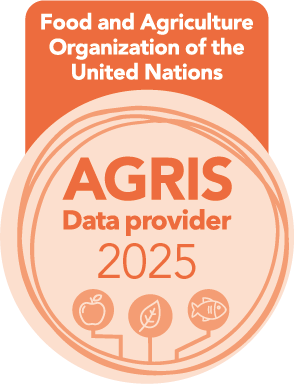Analysis of Profitability of Commercial Dog Breeding Ventures in Thrissur and Ernakulam Districts of Kerala
DOI:
https://doi.org/10.26725/JEE.2021.4.33.6700-6706Keywords:
Dog breeding; Profitability; Factors; KeralaAbstract
Kerala's commercial dog breeding enterprise is a promising one with the potential to reduceyouth unemployment and provide a livelihood. However, the state lacks authentic information on factors affecting profitability of commercial dog breeding business. The present study was conducted to identify the association between factors that affect profitability of commercial dog breeding in Kerala. The study was conducted using an ex-post facto research design on 60 commercial dog breeding units selected randomly from Thrissur and Ernakulam districts of Kerala.Data collection was done using a pretested-structured interview schedule. Study revealed that years of experience, number of dogs reared, number of puppies born, cost of veterinary care, level of adoption and labour cost were correlated with profitability of commercial dog breeding enterprise.References
Arnott, E. R., Early, J. B., Wade, C. M., & McGreevy, P. D. (2014). Estimating the economic value of Australian stock herding dogs. Animal Welfare, 23(2), 189–197.
Finlayson, J. D., Lawes, R. A., Metcalf, T., Robertson, M. J., Ferris, D., & Ewing, M. A. ( 2012 ) . A bio- economic evaluation of the profitability of adopting subtropical grasses and pasture-cropping on crop-livestock farms. Agricultural Systems, 106(1), 102–112.
Foltz, J. D., & Chang, H. H. (2002). The adoption and profitability of rbST on Connecticut dairy farms. American Journal of Agricultural Economics, 84(4), 1021–1032.
Ishola, O. O., Awosanya, E. J., & Adeniyi, I. S.(2016). Management and socio- economic determinants of profitability in dog breeding business in Oyo state, Nigeria. Sokoto Journal of Veterinary Sciences, 14(3), 32–39.
Lima, L. G., de Souza, N. O. B., Rios, R. R., de Melo, B. A., dos Santos, L. T. A., Silva, KdM., Murphy, T. W., & Fraga, A. B. (2020). Advances in molecular genetic techniques applied to selection for litter size in goats (Capra hircus): A review. Journal of Applied Animal Research, 48(1), 38–44.
Murat, H., Kockaya, M., & Özşensoy, Y. U. S.U. F. (2018). Technical and economic analysis of Kangal shepherd dog breeding farms. International Journal of Scientific and Technological Research, 4(10), 135–140.
Ombasa, J. K. (2017). Determinants of success of dog breeding firms in Kenya a case of dog breeding firms in Kajiado North constituency, Kenya (Unpublished Doctoral Dissertation]. University of Nairobi.
Saitone, T. L., & Bruno, E. M. (2020). Cost effectiveness of livestock guardian dogs for predator control. Wildlife Society Bulletin, 44(1), 101–109.
Schutjens, V. A. J. M., & Wever, E. (2000). Determinants of new firm success. Papers in Regional Science, 79(2), 135–153.
Shah, N. (2013). Literacy rate in India. International Journal of Research in all Subjects in Multi Languages, 1(7), 12–16.
Tester, C. A., Popp, M. P., Kemper, N. P., Nalley, L. L., & West, G. (2019). Impact of weather and herd size management on beef cow profitability. Journal of Agricultural and Applied Economics, 51(4), 545–567.
Downloads
Published
How to Cite
Issue
Section
License
Copyright (c) 2021 https://creativecommons.org/licenses/by-nc-sa/4.0/

This work is licensed under a Creative Commons Attribution-NonCommercial-ShareAlike 4.0 International License.
Authors who publish with JEE agree to the following terms:
- Authors retain copyright and grant JEE right of first publication with the work simultaneously licensed under a Creative Commons Attribution License that allows others to share the work with an acknowledgement of the work's authorship and initial publication in this journal.
- Authors are able to enter into separate, additional contractual arrangements for the non-exclusive distribution of the journal's published version of the work (e.g., post it to an institutional repository or publish it in a book), with an acknowledgement of its initial publication in this journal.
- Authors are permitted and encouraged to post their work online (e.g., in institutional repositories or on their website) prior to and during the submission process, as it can lead to productive exchanges, as well as earlier and greater citation of published work (See The Effect of Open Access).
Extension Education Society
https://creativecommons.org/licenses/by-nc-sa/4.0/
This work is licensed under a Creative Commons Attribution-NonCommercial-ShareAlike 4.0 International License.













.png)

